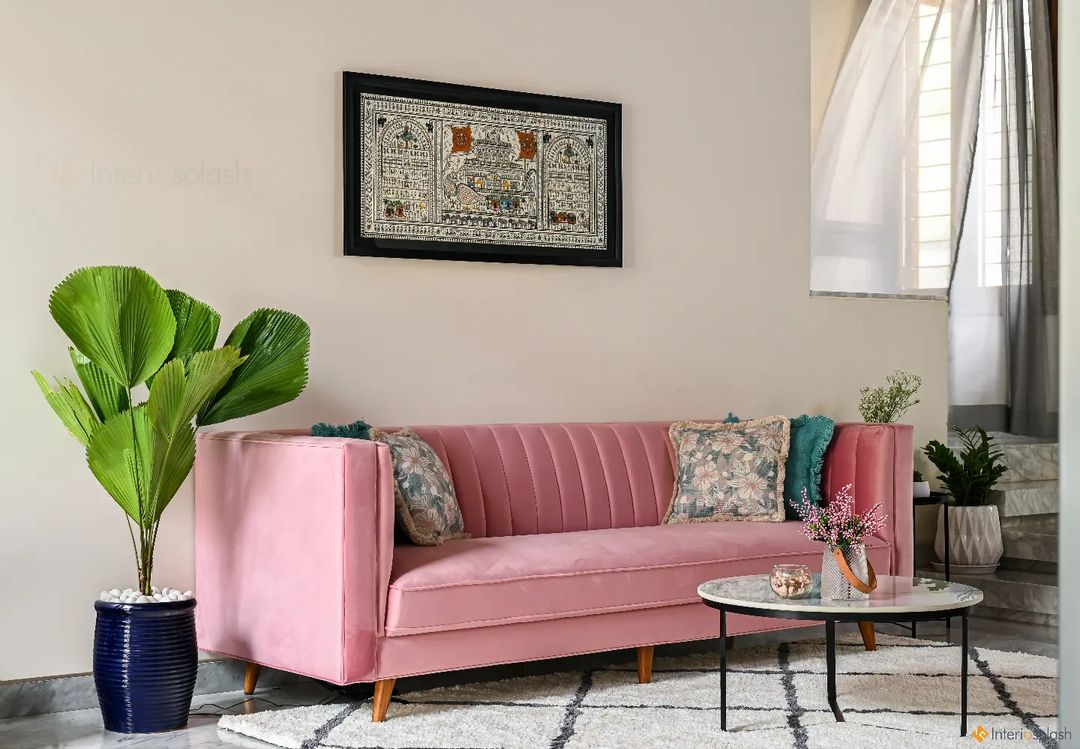Introduction
In the realm of luxury interior design, texture plays a pivotal role in creating spaces that are not only visually stunning but also deeply engaging and comfortable. Texture adds depth, character, and personality to a room, transforming it from a simple living space into a luxurious sanctuary. Understanding how to effectively use texture is a skill that top luxury interior designers have mastered. In this article, we will explore the power of texture, delving into insights from top interior designers in Bangalore and providing practical tips on how to incorporate texture into your home to achieve a high-end look.
Understanding Texture in Interior Design
What is Texture?
Texture refers to the surface quality of a material, which can be tactile (felt by touch) or visual (perceived by sight). It encompasses a range of characteristics, such as smoothness, roughness, softness, and hardness. In interior design, texture is used to create visual interest, contrast, and a sense of balance within a space.
The Role of Texture in Interior Design
- Enhances Visual Interest: Texture adds complexity and detail to a room, making it visually appealing.
- Creates Depth and Dimension: Different textures can make a space feel more layered and dynamic.
- Conveys Mood and Ambiance: Soft textures can create a cozy, inviting atmosphere, while sleek, hard textures can impart a modern, sophisticated vibe.
- Defines Space: Texture can be used to delineate areas within an open-plan layout, guiding the flow of movement and use.
Insights from Top Luxury Interior Designers
Using Texture to Create Luxurious Spaces
Leading luxury interior designers understand the profound impact texture can have on a space. Here are some of their key insights:
1. Layering Textures
Luxury interiors often feature a harmonious blend of multiple textures. Designers like Kelly Wearstler and Jean-Louis Deniot are known for their skillful layering techniques.
- Tip: Combine different textures, such as velvet cushions, silk drapes, and a wool rug, to create a rich, tactile experience.
- Example: Pairing a sleek marble coffee table with a plush, velvet sofa and a textured linen throw.
2. Balancing Textures
Balance is crucial when incorporating texture. Too many contrasting textures can overwhelm a space, while too few can make it feel flat.
- Tip: Achieve balance by mixing rough and smooth textures, and soft and hard surfaces.
- Example: Offset the roughness of a reclaimed wood dining table with smooth, polished metal chairs.
3. Highlighting Architectural Features
Texture can be used to draw attention to architectural elements, such as a feature wall or ceiling.
- Tip: Use textured materials, like exposed brick or stone, to highlight key features.
- Example: A textured stone fireplace as a focal point in a living room.
Practical Tips for Incorporating Texture
Textiles
Textiles are one of the easiest ways to introduce texture into a space.
- Rugs: Choose rugs with varied textures, such as shag, woven, or tufted, to add interest underfoot.
- Cushions and Throws: Mix cushions and throws in different fabrics like velvet, silk, and wool for a cozy yet sophisticated look.
- Curtains: Opt for layered curtains with sheer and heavy fabrics to create depth.
Wall Treatments
Walls offer a large canvas for introducing texture.
- Wallpaper: Textured wallpaper, such as grasscloth or embossed designs, can add subtle or dramatic texture to walls.
- Paneling: Wooden paneling or wainscoting can add a classic, textured element to a room.
- Paint Techniques: Faux finishes, such as Venetian plaster or textured paint, can create a unique, tactile surface.
Furniture and Accessories
Furniture and accessories are essential for adding texture.
- Upholstered Furniture: Choose furniture with rich, textured fabrics like velvet, tweed, or leather.
- Accent Pieces: Incorporate textured accessories, such as woven baskets, ceramic vases, and metal sculptures.
- Natural Elements: Use natural materials like stone, wood, and plants to introduce organic textures.
Flooring
Flooring is a key area to introduce texture, enhancing the overall feel of a room.
- Wood: Different wood finishes, such as distressed or polished, can add varying textures.
- Tile: Textured tiles, such as those with a matte or patterned finish, can add depth to floors.
- Carpet: Carpeting with a deep pile or intricate pattern can provide a soft, tactile surface.
Case Studies: Luxury Interiors with Exemplary Use of Texture
Case Study 1: Modern Opulence by Kelly Wearstler
Kelly Wearstler’s projects often showcase her mastery of texture.
- Living Room: Features a mix of velvet sofas, silk curtains, and a shag rug, creating a plush, inviting atmosphere.
- Dining Room: Combines a polished marble table with leather chairs and a textured wallpaper backdrop, balancing smooth and tactile surfaces.
Case Study 2: Timeless Elegance by Jean-Louis Deniot
Jean-Louis Deniot’s designs epitomize timeless elegance with a sophisticated use of texture.
- Bedroom: Utilizes a velvet headboard, silk bedding, and a woolen rug to create a luxurious, layered look.
- Bathroom: Features textured stone walls, a smooth marble vanity, and plush towels, achieving a harmonious balance of materials.
Conclusion
The power of texture in luxury interior design cannot be overstated. It enhances visual interest, creates depth, and conveys a sense of luxury and sophistication. By understanding and applying the principles shared by top luxury interior designers, you can transform your home into a space that is not only beautiful but also rich in tactile appeal. Whether through textiles, wall treatments, furniture, or flooring, incorporating texture thoughtfully and skillfully will elevate your interiors to new heights of luxury.



